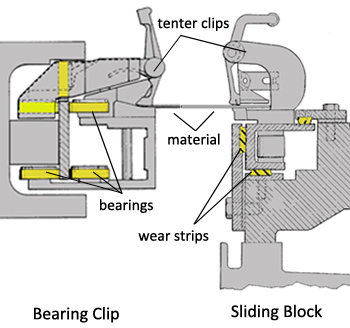

March 28 2018

The process of transverse direction orientation (TDO) is used to produce plastic items such as PETG shrink sleeve film, or combined with machine direction orientation (MDO) to produce products such as BOPP film. In a previous article we explained that there are two key components in a TDO tenter that make this possible; the tenter rail hinge and the tenter clip and chain system. In this article we’ll look at tenter clips and chains and explain the two basic types along with their advantages and disadvantages.
A tenter clip is the mechanism that clamps onto the edges of the plastic sheet as it travels through the TDO. A typical TDO would have hundreds or thousands of these clips.The clips are part of (or attached to) chains that ride on rails that can be adjusted inward and outward relative to the centerline of the machine to achieve the desired amount of stretching. One type of clip used mostly in high speed commodities such as BOPP and BOPET is the bearing clip. Each bearing clip is supported by an arrangement of typically up to 9 ball bearings that ride along a steel band called a monorail. This type of clip allows for a smooth travel with little to no vibration and minimal ongoing lubrication requirements. However, bearings have a limited lifespan.The higher the stretching forces and the faster they travel, the quicker they wear out. This type of clip offers high productivity but with it comes a higher overall cost, not just in the initial cost of the machine but also with ongoing maintenance. To minimize downtime, companies who use this type of clip and rail system will purchase a spare necklace - a full length of clips and chain for either side of the tenter - that can be swapped periodically with a worn necklace so that bearings can be replaced off-line before they fail in large numbers. Maintaining these spare necklaces can prove very expensive and time consuming.
The other basic type of tenter clip and chain used in TDO systems is the sliding block style, where the chain to which the clips are attached travels inside a rail channel sliding on wear strips made from special low-friction materials. This type of tenter clip is best used in moderate speed lines such as those used for specialty films like battery separator materials, PTFE membranes, and shrink films, as well as for applications for heavier gauge film such as OPS and BOPLA. Sliding block clips tend to vibrate if the gaps between rail joints are excessively large or uneven, similar to how a train makes the well-known clickety-clack sound when traveling down the track. However, if these joints are engineered properly then the vibration can be greatly minimized. Also, since these blocks are sliding in the rail channels, ongoing automatic lubrication is required to reduce friction and prolong the life of the wear strips. The biggest benefit of a sliding block tenter clip system is cost. A new system is roughly one-half to one-third the cost of a bearing clip system and even less expensive to maintain. The clips themselves are very robust and the wear strips last many times longer and are easier to replace than the bearings on a bearing clip.
As you can see, as with any two comparable technologies, each has pros and cons. When deciding which type to use for your application, you need to weigh the options: smoother operation but high cost and high maintenance of the bearing clip or low cost and low maintenance but sensitive operation of the sliding block. Keep in mind too that sliding block clip systems can run at relatively high speeds when the rail joint spacing is reduced and the correct amount of lubrication is applied. Ultimately, a combination of product requirements and budgetary considerations will influence which system will perform best for your application.
In our experience, for all applications other than high speed commodity film lines, the added cost of bearing clip systems is rarely justified.